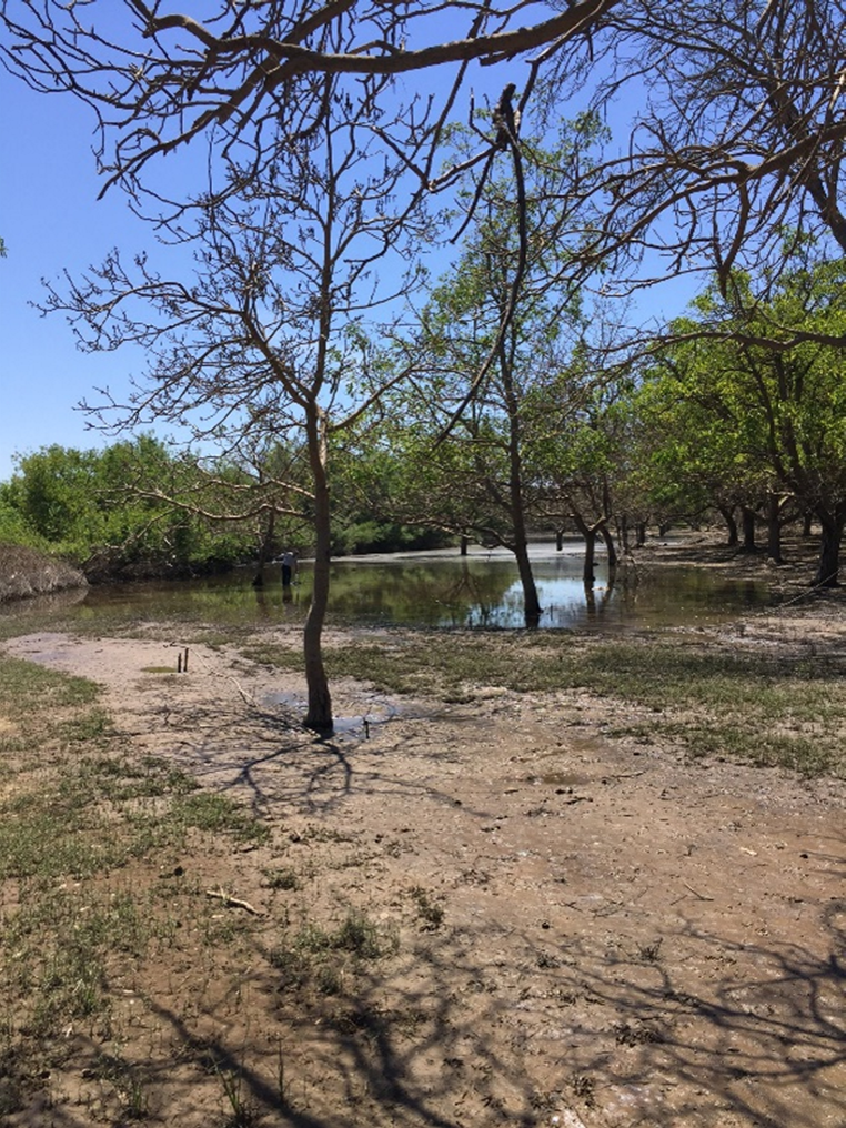Luke Milliron, UCCE Orchard Advisor, Butte, Tehama & Glenn Counties; Janine Hasey, UCCE Orchard Advisor Emeritus
In the 2019 postharvest issue of the Sacramento Valley Walnut Newsletter we wrote the first part of the preparing for extreme events series, which was focused on freeze and fire. Hopefully, you have not had to contend with either of those extremes this past autumn. If you missed this issue but want to learn more, see preparing for freeze and fire.
In part two of this series we discuss preparing for flood. Although flooding may not confront you in 2020, it’s best to be prepared for this inevitable extreme!

Photo 1. A walnut tree in the foreground collapsed in a swale of flood water in a river bottom of the Feather River (May 23, 2017, by Janine Hasey)
Flooding. How can damage be reduced?
Flooding from unprecedented flows of the Sacramento and Feather Rivers in early 2017 through spring, resulted in extensive orchard damage. Although there is little you can do to prepare against the most extreme flooding, some practices can help to reduce damage. For more information, see flood damage and recovery.
- Moving water is key to trees surviving because it is oxygenated. Standing water can lead to extensive damage from waterlogging induced root-death. Furthermore, saturated soils favor Phytophthora. Keep ditches clear to keep water moving away from the orchard. If water is still not moving off the orchard, pump the water out if possible or dig trenches. Anything you can do to prevent stagnant water should be considered.
- Although it’s too late for this season, in some circumstances planting cover crops in the orchard can improve infiltration. Roots from vegetation cover may help hold the soil and reduce erosion. The UC ANR publication “Cover Crops for Walnut Orchards” is an excellent guide to deciding whether cover crops fit into your operation, how to choose a cover crop, and how to manage it.
- Resident vegetation (weeds) in row-middles and along orchard edges can offer similar benefits by increasing infiltration, reducing erosion, and allowing equipment back in the orchard sooner. A bare orchard floor, and especially recently cultivated ground is the most susceptible to erosion.
- Just as with fire and freeze in part one, trees that have been damaged from flooding should not be quickly removed. Wait until mid-summer after you have had time to see if adventitious (dormant) buds break and provide vegetative growth that will eventually establish a new tree canopy. In addition, keeping damaged trees standing can allow for insurance and recovery program evaluation.
- Flood damage can have long-term impacts on tree productivity. The effects from 2017 long-term flooding reduced productivity in some orchards through 2019.


Leave a Reply